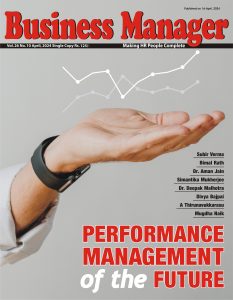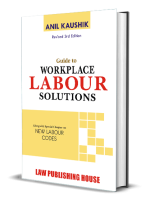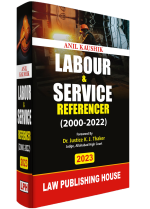Culture plays a vital role in motivating and retaining talent. An organization might have brilliant products and splendid services to offer, however, if their workplace and employee culture is questionable, the organization is sure to experience more than a few rough bumps. Only a select section of employees may be emotionally invested in contributing their time, talent, and energy in bringing value to their team and advancing the organization’s initiatives. This investment is further drained in organizations that have a closed-door approach or a clouded review system. This is a major problem that many leaders and managers face in today’s workforce.
The past two years have been turbulent and disturbing for organizations and their employees alike. While some companies have taken steps to alleviate or reduce the impact, there is always room for improvement. It’s never too late to make some important changes, especially in terms of employee wellness and growth. Therefore, creating a transparent feedback and review atmosphere among employees, HRs and management have become more imperative than ever in the modern workspace with a dispersed workforce.
Encouraging an open-door policy, regular check-ins, and anonymous reviews in the workplace is the need of the hour. A healthy workforce with high employee morale relies heavily on verbal, engaging communication. In most organizations, communication is just a one-way stream that only flows downward from top management to the team. In such scenarios, employees rarely feel that they have a voice. Only genuine interaction with your employees can help them to feel comfortable and open up about their issues and challenges. Moreover, weekly or consistent feedback accelerates any course correction that is required. During the pandemic, the way we communicate or the tools used to connect with our team members might have changed with the use of virtual media, however, the value of interpersonal exchange has not changed.
Various tools can be used to understand employee engagement such as metrics on how many hours they are working, what is their level of input and focus during work. These tools can be customized to individual employees or teams. This data can be used to understand the work environment and how inclusive the workplace really is. Based on the findings, changes can be made at a deeper level to improve open communication, thereby increasing the working efficiency of employees. When people see they are being treated equally and fairly they automatically feel protected in the workplace. Giving employees a chance to work in a safe and encouraging environment would help them feel included.
Humans, on the other hand, are guided by a desire for compassion, admiration, and popularity. In the digital age, emphasizing the “Human” aspect of HR will be vital. The utmost important aspects of every organization today are emotional intelligence and technology. And if you can place them together, you’ll be able to do wonders in the world of business.
Feedback is often hard to give to your colleagues as most people don’t want to risk offending anyone. However, organisations need to get their team to look at feedback differently. It should be an obligation for team members to share feedback with each other, and the team should be expected to develop the emotional maturity to receive feedback well. Feedback should always be given in a constructive manner and not with the purpose of demeaning someone. Also, when feedback is given upwards to managers, how they respond is very important. In the book, No Rules, author Reed Hastings talks about the importance of managers responding positively to receiving feedback to set the tone for everyone else. Encouraging open and transparent sharing of feedback is a great way of ensuring continuous improvement for the company to work together more effectively.
At an organizational level, a priority that needs to be ensured is that statutory compliance is looked after. Further, being flexible towards creating policies in your organisation, building them to also cater to individual needs is important. Ensure that people managers are given proper training to understand that the contribution they bring to the table is valuable rather than their title or where they come from. Maintaining equal policies for all is critical; building a culture to accommodate diverse individuals with unique abilities effectively is important to ensure statutory benefits are applied to all, equally. If your approach is in the right place, it will lead to individual growth. Giving people the chance to ask for feedback themselves is also critical and should be a part of the existing organisational processes.
Also Read: BharatPe appoints Smriti Handa as Chief Human Resources Officer
What employees today look for in their companies is ‘transparency’ – one of the factors that makes it an ideal place to work for. Transparency in the workplace encourages communication and sharing, this could mean sharing innovative ideas, new processes to improve workflows or feedback during performance reviews. It helps better employee engagement and satisfaction which helps build trust among management and employees, build stronger workforce culture and values with better custom relations. Employees who feel trusted and cared for will want their organization to thrive.
Technology has become a greater part of the picture in building an engaged workforce during such difficult times. The digital world is evolving at a fast pace. Humans, on the other hand, are guided by a desire for compassion, admiration, and popularity. In the digital age, emphasizing the “Human” aspect of HR will be vital. The utmost important aspects of every organization today are emotional intelligence and technology. And if you can place them together, you’ll be able to do wonders in the world of business.
In conclusion, organizations have multiple options to help employees thrive. While some strategies might involve an investment, many of them are doable and require only a few resources. The key here is to start and take initiative. Helping people achieve their goals at work is valuable on its own merits, but can also enhance a company’s growth sustainably. By creating a more open, human workplace that enables employees to thrive, companies can boost people’s positive emotions and well-being at work. This, in turn, can boost employee performance and business results.
Employee wellbeing fosters loyalty and attracts talent. Organizations who focus on creating a more human workplace with transparent feedback and reviews atmosphere among HRs, employees and managers will ultimately bring wins and success for their organizations, shareholders and customers.



























Add comment